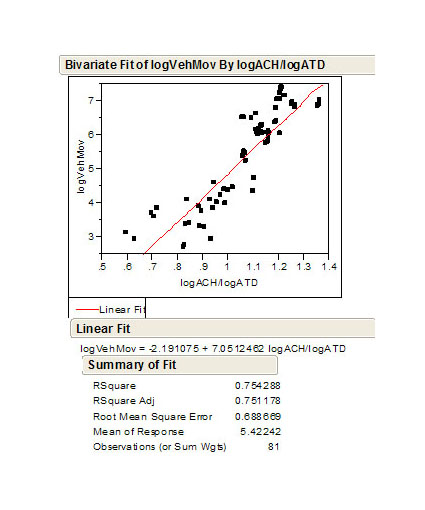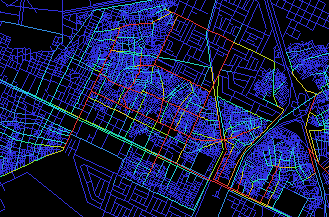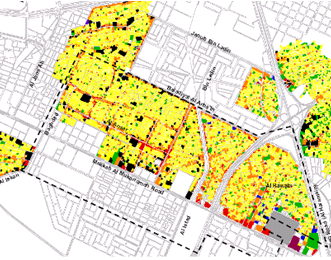How does space syntax help explain the relationship between the built environment and human behaviour?
The following models have been developed in space syntax, with an explanation of how these can be applied in real world practices.
1. Movement model
How can spatial models help pedestrian movement forecasting and spatial design optimisation?
a. Qualitative analysis
Make a visual comparison between spatial accessibility patterns and movement patterns, in order to get a qualitative understanding of their relations.
b. Regression correlation analysis
Conduct statistical correlation analysis between the observed movement rates and the syntactic variables such as integration and choice. In the case of Barnsbury, 75.4% movement rates can be predicted by the variable of choice (A).
See the tutorial for further information.
c. Pedestrian movement forecast
Use the regression formula from the correlation analysis to predict pedestrian movement in testing different design options.
2. Land use model
How can spatial models optimise land use distribution?
a. Qualitative analysis
Make a visual comparison between the spatial accessibility pattern (B) and land use pattern (C) , in an attempt to understand how spatial accessibility impacts on land use distribution.
b. Statistical analysis
Conduct statistical analysis between land uses and the syntactic variables (eg. choice). In the case of Central London, 80% of retail units are located on the 20% most spatially accessible streets.
c. Land use optimisation
Optimise land use distribution according to the statistical analysis.
3. Others
Other models include crime models and urban value models. These models are currently under development. For details, please see the References.









